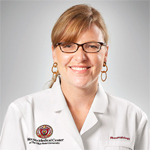The transition from pediatric to adult care can be a rocky one. For many rheumatology patients, any problems in the move can cause gaps in care. To address this issue, the ACR joined the American College of Physicians’ (ACP) Pediatric to Adult Care Transitions Initiative.
The Initiative is a project spearheaded by the ACP’s Council of Subspecialty Societies, in collaboration with the Got Transition (GT)/Center for Health Care Transition Improvement, the Maternal and Child Health Bureau, the National Alliance to Advance Adolescent Health, the Society of General Internal Medicine and the Society of Adolescent Health and Medicine.
As part of the Initiative, the ACP asked various subspecialties to develop toolkits specific to their needs. The ACR responded to that request by forming the ACR Transition Work Group. ACR and ARHP members with experience in adult and/or pediatric rheumatology met to work out what was needed to be included in the kits.
“There is a robust amount of literature suggesting that we don’t do a particularly good job of preparing young adults with complex medical conditions to enter the adult medical sphere,” says Stacy P. Ardoin, MD, MHS, associate professor of clinical medicine at The Ohio State University and Nationwide Children’s Hospital in Columbus and chair of the ACR’s Special Committee on Pediatric Rheumatology. Dr. Ardoin led the ACR Transition Work Group. “Studies across many specialties, including rheumatology, show that less than half of the time, these families get the information they need to successfully complete the transition.”
Size of the Problem
Of the roughly 18 million people the ACP calls “emerging adults,” about one in four has a chronic medical condition, and in many cases, they don’t understand the nature of their conditions, which can result in poor adherence or gaps in care. If this happens, unnecessary complications may have occurred by the time they reestablish contact with their new rheumatologist.

Dr. Ardoin
“One of the things about the Initiative that is especially unique is that it [originated] from the adult side,” said Dr. Ardoin. “In the past, efforts to focus on the transition process improvements had been primarily initiated from the pediatric side.”
Overall, the Initiative strived to put in place an evidence-based model with six core elements. These included suggested transition policies, tracking and monitoring of the patient through the process, assessing patient readiness for the change, planning and transfer of care and completion of the hand-off.
Toolkit Elements
To help ease the pediatric-to-adult care transition, the Initiative decided to create a specialized toolkit with at least three elements. Among them was a transition-readiness assessment tool for the pediatric team, a medical summary and transfer record to standardize communication between the pediatric and adult teams, and a self-care assessment for the patient to complete so the adult team could assess gaps in their knowledge and address those issues going forward.

Dr. Oppermann
“This is an odd time to transition patients,” says Brian Oppermann, MD, of the Department of Rheumatology at the Geisinger Health System in State College, Pa. “These patients are not only transitioning from pediatric practices to adult practices that function differently, but they may also be moving across or out of state for college, [which] poses other new challenges.”
This means challenges in the way people are treated may arise, not the least of which is reduced parental involvement in medical decision making.
A Multi-Faceted Developmental Process
The process to come up with these toolkits was multi-faceted. The ACR Transition Work Group looked at the results of a previously published study of members of the Childhood Arthritis and Rheumatology Research Association. Practitioners were asked about what they felt was needed regarding standardized tools and what areas they felt least comfortable with during the transition process.1
To obtain input from adult practitioners, the committee used the results of a previously completed survey of members of the ACR. Both groups indicated a need for standardized transition tools in rheumatology.2
The work was overseen by a task force that was diverse geographically and in the practice setting, and included both pediatric and adult practitioners. The task force also included patients and parents. Working over a roughly nine-month period, the group reviewed existing literature and available tools, developing some tools of their own as needed.
Focused on JIA & Lupus
“It was the decision of the ACR Transition Work Group to focus on juvenile idiopathic arthritis [JIA] and lupus,” says Dr. Ardoin. “JIA is the most common pediatric diagnosis in pediatric rheumatology, and over half of JIA patients require continued treatment for arthritis in adulthood. In addition, there are some important differences in the treatment between JIA and adult arthritis about which adult practitioners should be aware.”
Lupus was chosen because it tends to be very severe, and patients will have the disease into adulthood. It is also one of the more complex diseases for which gaps in treatment can increase the likelihood of bad outcomes.
‘There is a robust amount of literature suggesting that we don’t do a particularly good job of preparing young adults with complex medical conditions to enter the adult medical sphere.’ —Stacy P. Ardoin, MD, MHS
2 Sets of Kits
The ACR toolkits were broken down into two sets for each disease: one tailored to the needs of pediatric rheumatologists and a second tailored to adult practitioners.
For the pediatric rheumatologist, a suggested transfer policy was included to be given to the patient and their parents when appropriate. This outlines:
- The fact that the patient will have to take more responsibility for their care;
- Legal concerns, such as the requirement that the patient give their consent before their physician can talk to their parents about their health; and
- How the pediatric doctors will assist the patient in finding a new physician.
There is also a suggested transfer letter to send to the accepting doctor and outlines for medical summaries for both JIA and lupus. Finally, it includes two transition readiness assessments.
For the adult side, the toolkits include a welcome letter, a patient self-assessment tool and a list of five things the patient should know about their disease.
“This can help with the transition of care just as if the patient went from one adult rheumatologist to another,” says Dr. Oppermann. “People come to our practices all the time with no information or inadequate information. These toolkits are useful [because they help us avoid] wasting resources on backtracking records, repeating tests and addressing other concerns, such as whether they have had the required childhood vaccinations.”
The tools have been released in a Microsoft Word document and were specifically designed to be customizable. Every practice can pick and choose what they use according to their needs, resources and personnel.
“These tools could help a practice design templates for their electronic medical records systems to make it easier to assemble and integrate the data,” says Dr. Oppermann. “These should help in transitioning care to a colleague across the hall or across the country.”
Dr. Ardoin agrees with this assessment, noting that she practices both pediatric and adult rheumatology.
“Even when I transfer my pediatric patients to my adult practice, I still need to address readiness of the patient, have them do the self-assessments and make sure the needed medical records go from the pediatric to the adult record. These tools will facilitate the transfer, whether it is to someone you know well, or someone you have never worked with.”
‘People come to our practices all the time with no information or inadequate information. These toolkits are useful [because they help us avoid] wasting resources on backtracking records, repeating tests & addressing other concerns, such as whether they have had the required childhood vaccinations.’ —Dr. Oppermann
Payment Issues Addressed
It will take time to fill out these forms and get them where they need to go; however, that issue is also addressed in the way the toolkits are designed.
“Many physicians are unaware that they can bill for some of these extra services,” says Dr. Ardoin. “For example, if you use a scorable tool—and all of ours are scorable—to address readiness, there is a CPT code that can be used to account for the extra time.”
In the end, what’s important is making sure that patients are transferred from one provider to another in ways that ensure better continuity of care as they move through their life.
“When you are making changes and incorporating them into your practice, it is a lot of work up front,” says Dr. Oppermann. “But when you are done, it pays off in the end.”
For more information and suggested forms, visit the ACR website.
Kurt Ullman is a freelance writer based in Indiana.
References
- Chira P, Ronis T, Ardoin S, White P. Transitioning youth with rheumatic diseases: Perspectives of pediatric rheumatology providers in the United States and Canada. J Rheum. 2014 Apr;41(4):768–769.
- Zisman D, White P, Chira P, et al. U.S. adult rheumatologists perspective on transition process for young adults with rheumatic conditions [Abstract 1277]. Presented at the 2015 ACR/AHRP Annual Meeting. San Francisco. 2015 Nov 9.



